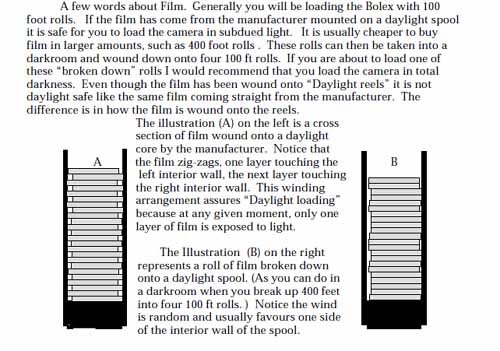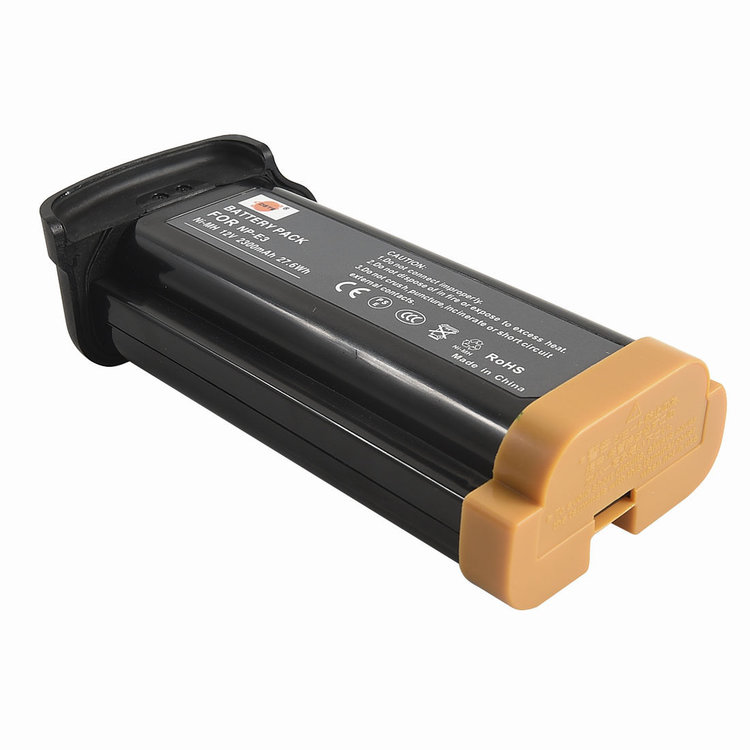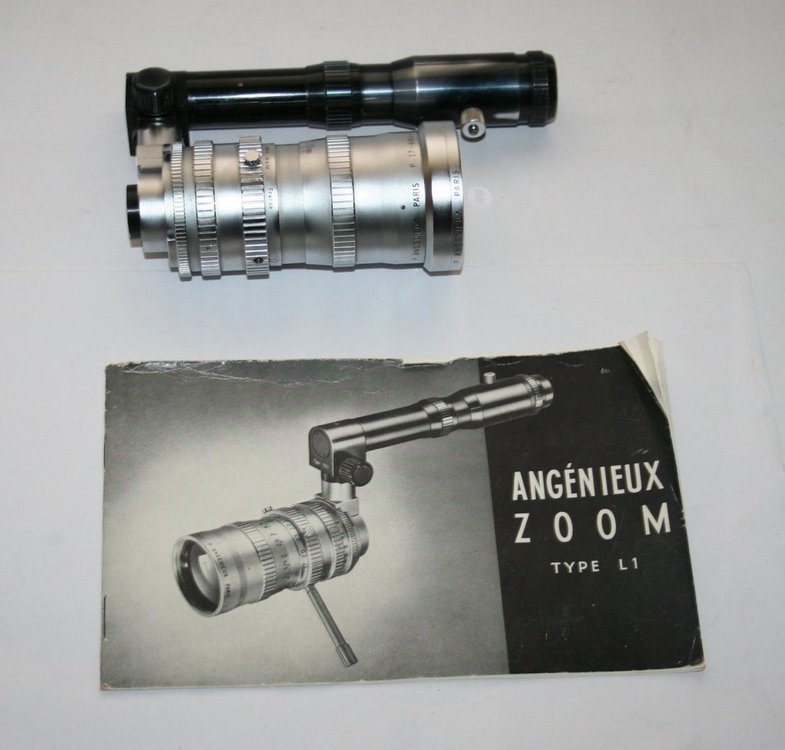
Pavan Deep
Basic Member-
Posts
454 -
Joined
-
Last visited
Everything posted by Pavan Deep
-
Connector specs for ACL ergonomic handgrip on/off switch
Pavan Deep replied to Gregg MacPherson's topic in Eclair
I built a connector I will find the information. Pav- 1 reply
-
- ACL
- on/off switch
-
(and 1 more)
Tagged with:
-
Help me identify causes of light leaks
Pavan Deep replied to Francis Qureshi's topic in Film Stocks & Processing
I am pretty sure the Aaton LTR-7 can take 100ft spools. Pav -
Help me identify causes of light leaks
Pavan Deep replied to Francis Qureshi's topic in Film Stocks & Processing
If you have used 100ft daylight spools then I am certain it’s how you've loaded the spools and not the camera, trying using a 400ft roll. Strictly speaking ‘daylight’ spools are not really daylight, especially for Super 16, you need to load them in the dark. If you’ve spooled your own daylight spools then it’s likely a combination of the spools and your loading, the film has to be spooled in a zig-zag pattern. Pav -
I can only share my experience, from what I know, most of the new c mount lenses you mention are designed for 1, 2/3, 1/2 and 1/3 inch digital sensors, I think they are made to different standards to cine lenses, but I don't know what these differences are. I don't think there have been many tests done with these lenses on film cameras. I have used the small Pentax lenses which are for 1 inch CCTV cameras on my 16mm cameras and have found them to be very fast and sharp. Pav
-
If you buy 4 100ft rolls from Frame 24 at £36 you'll spend around £144, whereas as 400ft roll will cost you around £108, so that's £36. Is that 'peanuts'? Pav
-
Look at the film Theeb [2014], there are a lot of landscape shots, it was shot in a desert on Super 16 with an Arri 416 and Hawk anamorphics. Pav
-
I thought I'd add to this discussion, I have got one of these batteries; It's 12 volts, it's small and light, I bought it off ebay, it works pretty well for my ACL II. Pav
-
Initially I thought it wouldn't work, but the handle fits nicely, I use the ACL 2 with the small motor, 200ft magazine and c mount lenses, this makes the whole outfit very small and this handle seems to be fine with that. Though I am not sure how it will fare with larger lenses, the bigger motors and 400ft magazines. Pav
-
Seeking opinions on equipment list. We have a $100k budget.
Pavan Deep replied to Jin Kim's topic in General Discussion
I agree - Why not shoot film? A lot of people shy away from it, claiming there's no equipment or lab facilities nearby and so on, but the fact is, as you've said, it's cheaper to shoot 16mm than high end digital. Pav -
Just have to ask, being curious why would you do that? Pav
-
That's odd; Which C mount camera are you using? I have a similar [not the exact same] C mount to EF adapter for my ACL II and there hasn't been an issue with threading it. Pav
-
When someone is planning to shoot a feature it’s become normal for people to say ‘if you have the budget try shooting on Super 16’. I have heard this many times, this assumes that if you are planning a feature film using Super 16 is going to cost more. This assumption is slightly misleading as making a feature is going to be expensive no matter what format is used. Super 16 can be expensive, it just depends on how you shoot, it doesn’t always cost more, but the workflow is more complicated and slower as there's processing and scanning to consider. Pav
-
This March we are running a one day course in Birmingham city centre[uK], introducing 16mm and Super 16 filmmaking practices. All participants will gain an elementary knowledge of Super 16 and visual storytelling. We will look at amateur and professional cameras, the current film stock, processing & Scanning options, as well as exposure, lenses, loading cameras. We will learn about scripting and planning for a film shoot and best of all everyone gets to do some filming. www.analoguefilmacademy.co.uk Pav
-
I wonder about the shutter, the c-mount doesn’t leave much room in the camera for a 45 degree mirror shutter, it might not be mirrored, unless it’s mentioned, instead there might be an oscillating shutter like the ACL’s have as these take up less room. I would love to see inside the camera. Pav
-
Do you agree with this guy's opinion?
Pavan Deep replied to Hrishikesh Jha's topic in General Discussion
On another note here about production in India, I am sure that other posters here from India will know more about the current film production trends in India. But from my knowledge film [celluloid] has been used widely throughout the 1990’s and 2000’s, in the 2000’s DI became popular, only in the last few years there has been an increase in digital acquisition and digital has been getting more popular as a result there have been some lab closures. Despite this many are still shooting film, the thing is film production in India is vast with so many films being made not just in Mumbai but in various Indian regions and it seems regional film production is increasing. Film acquisition is also continuing and there seems to be a growing trend in mainstream film production which use both digital and film. I am aware that Kodak is planning opening up a film lab in Mumbai again. Pav -
Do you agree with this guy's opinion?
Pavan Deep replied to Hrishikesh Jha's topic in General Discussion
I find that such strongly expresssed comments are common, people have been saying such things in similar tones for over 40 years, but film is still here. I feel that such comments are embedded with some resentment which is why they are slightly bitter and hostile, nevertheless they offer a perspective and like with anything we hear and read we shouldn't simply agree or dismiss them. The only thing in the comment that is noteworthy is that in most cases people are now working with digital technology. I feel many of these want to work with film, but feel they can't and the only way to accept their reality is to lash out like this by presenting jarred and biased views, passing them off as facts, this makes them feel better. -
In reality we can’t say anything concrete about the costs, as we don’t know much about this production, its length, shooting ratio, is there a lot of dialogue etc. All we really know is that a certain look is desired, a look which is specific to 16mm. I am sure it can be emulated with digital wizardry, but at what cost? Surely time is a cost. The OP state he has access to 16mm, so renting isn’t an issue, he then says he’s not entirely comfortable with 16mm. Hiring 16mm gear isn’t as expensive as hiring digital gear, in the current climate there are better deals available with 16mm gear. There’s an automatic assumption that film is expensive and therefore difficult, I disagree, as I think it depends on many factors, I spend a lot of time encouraging individuals to find out for themselves and then make an informed choice. I think that people should find out what the real costs are for their production before dismissing film and not to listen to others when the say; it’s hard, expensive and it’s a long process in post-production. A lot has happened in the world of 16mm and it HAS become cheaper and more accessible. I know a few years ago labs didn’t care about individuals and students, they were only interested in their big clients, well today labs are welcoming and more supportive to individuals and students. Pav
- 73 replies
-
- 1
-

-
- Digital
- Crop factor
- (and 7 more)
-
I haven’t followed all the posts, but it all seems too complicated. I hate to say but why don’t you use 16mm for the look you want? It’s less complicated and cheaper. Have you really looked at how much it will cost? Pav
- 73 replies
-
- Digital
- Crop factor
- (and 7 more)
-
The problem is that while the K3 is cheap it is 'old', I am not sure that training people with 'old' tools works ,,unless we are comfortable teaching history and how things used to be. To encourage young people to use Super 16 I think we need new tools. Pav
- 90 replies
-
- Coming Soon
- Bolex H16
-
(and 1 more)
Tagged with:
-
'New' means current and by default the majority are attracted to something new. A new camera will naturally create more interest and curiosity. But a conversion or updating and older camera is perhaps the best way to go, their are several candidates for this, we can look at a sync camera like the ACL or smaller amateur cameras, like remodeling a Bell and Howell 240. The re are many questions such as which camera and who the potential users will be. If a larger company produces a new camera it will definitely have broader appeal. For instance, Kodak is a huge company and are in an ideal position to manufacture a new Super 8 camera. They have most likely spent a lot of money on their new Super 8 camera and may not make a direct profit from the venture, but the 'buzz' they have created, the publicity will naturally give them, film and Super 8 a huge boost, so it's worth it. After all, all sorts of people will get to hear about their new Super 8 camera. If Arri released their 416 Super 16 camera again (unlikely), the camera will not be affordable it's not a cheap camera to make. Ikonoskop's Super 16 camera is interesting, it should have been more affordable than it was when new, it shouldn't have been as expensive, but it was, I suspect they manufactuers went overboard on making a cool looking design. I have used several, these cameras are popular with my students when I do Super 16 workshops because they are easy to use, fairly new and crucially they look modern. The a-cam is basically like an old amateur camera from the 1950's and is limited in so many ways, while it is an electronic 'sync' camera, it is noisy, it's small and light, but it is not that easy to load film and of course it can only take 100ft loads, then there's the biggest issue, it has not got no reflex viewfinder. In my opinion all these issues can be solved at very little cost and then it will have greater appeal especially amongst the newer generation of filmmakers. Pav
- 90 replies
-
- Coming Soon
- Bolex H16
-
(and 1 more)
Tagged with:
-
Back to the original posting about creating an affordable Super 16 camera. While there are many affordable super 16 cameras from the K3 to used Aaton and Arris, it is only natural for us to ask many questions as to what purpose will a new Super 16 camera will serve and whether in the current climate there’s really a need for such a camera. The thing is the K3, used Aatons or Arris are ‘old’, most were built over ten years ago. I believe a new affordable Super 16 camera will attract today’s generation of filmmakers, many of who are used to ‘new ‘things, new updates and the constant change, for many using technology that is over a year is like working with ‘antiques’, new doesn’t necessarily mean better, but it does make the format more current. A new Super 16 camera will definitely appeal and speak out to the younger generations and will give Super 16 a boost. The kind of camera and how to build one is a complex matter. In 2004 some Swedish filmmakers formed Ikonoskop and built a Super 16 camera, it was a simple machine, it was not better than what was out there and its affordability was always debated, but it produces very steady images. If someone makes a new Super 16 camera today it will create a 'buzz' and evoke ‘new’ interest. Pav
- 90 replies
-
- Coming Soon
- Bolex H16
-
(and 1 more)
Tagged with:
-
I have used the a-cam it doesn't have a reflex viewfinder, I am currently using an Eclair ACL that has been modified to Super 16 and it's great. Pav
- 90 replies
-
- Coming Soon
- Bolex H16
-
(and 1 more)
Tagged with:
-





